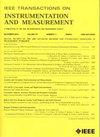毫米波雷达对说话对象的鲁棒生命体征监测
IF 5.6
2区 工程技术
Q1 ENGINEERING, ELECTRICAL & ELECTRONIC
IEEE Transactions on Instrumentation and Measurement
Pub Date : 2025-07-15
DOI:10.1109/TIM.2025.3588997
引用次数: 0
摘要
使用射频(RF)信号,特别是基于毫米波的方法测量生命体征,已经得到了广泛的关注。说话改变了发声过程中胸壁运动的模式,导致了与时间和频谱域的重要信号的复杂耦合。呼吸频谱展宽和相位噪声干扰是说话对象生命体征监测的难点。为了解决这些问题,提出了一种新的方法。首先,建立了胸壁运动的动态复合模型,详细分析了说话对象生命体征监测的内在挑战。其次,提出了一种递归自相关周期增强算法,利用呼吸的周期性和语音的间歇性来增强呼吸信号。采用了基于香农熵和谱集中的自适应终止机制的递归策略。第三,提出了一种自适应低秩分解(ALRD)算法,利用心跳信号汉克尔矩阵的低秩特性,将去噪任务转化为矩阵分解任务。将相位噪声建模为能量有界干扰,自适应选择最优参数,实现了微弱心跳信号与相位噪声的高质量分离。大量的实验结果表明,该方法能够准确、可靠地监测说话对象的生命体征。该研究填补了目前非接触式生命体征测量方法的一个关键空白。本文章由计算机程序翻译,如有差异,请以英文原文为准。
Robust Vital Signs Monitoring of Speaking Subjects Through mmWave Radar
Vital signs measurement using radio frequency (RF) signals, particularly mmWave-based methods, has gained widespread attention. Speaking, which modifies the pattern of chest wall motion during phonation, leads to intricate couplings with vital signals in both the temporal and spectral domains. Respiratory spectrum broadening and phase noise interference are challenges in vital signs monitoring of speaking subjects. To tackle these issues, a novel method is proposed. First, a dynamic composite model of chest wall motion is developed, and the inherent challenges in vital signs monitoring of speaking subjects are analyzed in detail. Second, a recursive autocorrelation periodic enhancement (RAPE) algorithm is proposed, leveraging the periodicity of respiration and the intermittency of speech to enhance the respiratory signal. A recursive strategy is employed, which incorporates an adaptive termination mechanism based on Shannon entropy and spectral concentration. Third, an adaptive low-rank decomposition (ALRD) algorithm is proposed, exploiting the low-rank property of the Hankel matrix from the heartbeat signal to transform the denoising challenge into a matrix decomposition task. It also models phase noise as energy-bounded interference and adaptively selects the optimal parameter, achieving high-quality separation of weak heartbeat signals from phase noise. Extensive experimental results demonstrate that the proposed method facilitates accurate and reliable vital signs monitoring for speaking subjects. This study bridges a critical gap in the current body of noncontact vital signs measurement methods.
求助全文
通过发布文献求助,成功后即可免费获取论文全文。
去求助
来源期刊

IEEE Transactions on Instrumentation and Measurement
工程技术-工程:电子与电气
CiteScore
9.00
自引率
23.20%
发文量
1294
审稿时长
3.9 months
期刊介绍:
Papers are sought that address innovative solutions to the development and use of electrical and electronic instruments and equipment to measure, monitor and/or record physical phenomena for the purpose of advancing measurement science, methods, functionality and applications. The scope of these papers may encompass: (1) theory, methodology, and practice of measurement; (2) design, development and evaluation of instrumentation and measurement systems and components used in generating, acquiring, conditioning and processing signals; (3) analysis, representation, display, and preservation of the information obtained from a set of measurements; and (4) scientific and technical support to establishment and maintenance of technical standards in the field of Instrumentation and Measurement.
 求助内容:
求助内容: 应助结果提醒方式:
应助结果提醒方式:


